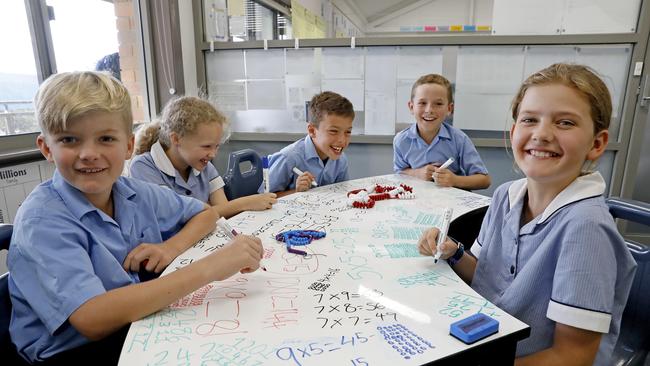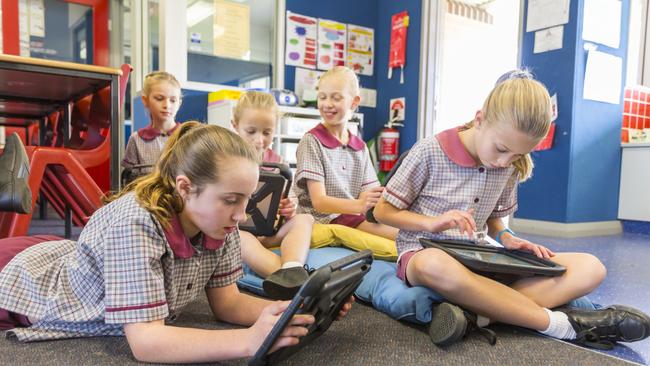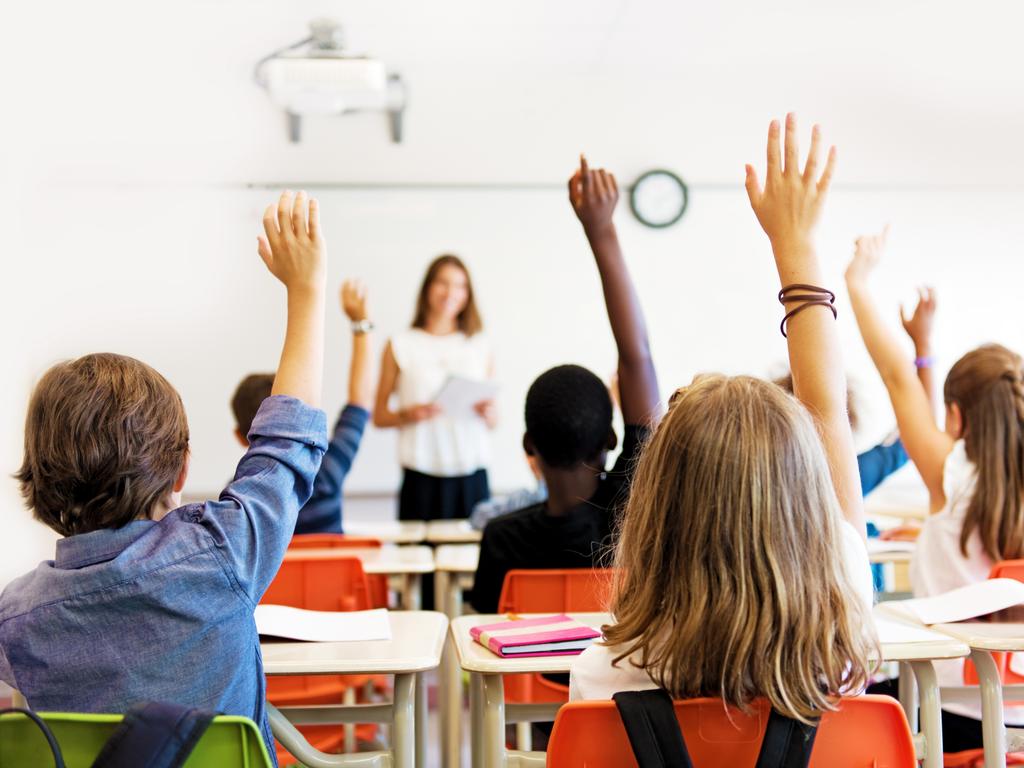Testing times for schools
A new national curriculum is expected to raise Australia’s rank in the world.

More than a decade has passed since Australia could relish in its status as a high-performing nation for education outcomes.
Once firmly ensconced within the top ten in the OECD’s Programme for International Student Assessment for reading, maths and science, a gradual decline in performance of the average 15-year-old has seen the nation slide down the rankings.
Currently ranked 15th in science, 16th in reading and 29th for maths, Australia now lags countries it once outperformed, such as Poland, Portugal and Slovenia.
The resultant “PISA shock” — a term used to describe the outcry that comes when a country’s results contradict its self-perception of the quality of its schooling system — has had successive governments scrambling for solutions.
Back in 2012, then prime minister Julia Gillard warned that Australia was at risk of losing “the education race” with its Asian competitors unless there was sustained reform. One of the proposed solutions was a new Australian Curriculum to apply to all the states and territories, which was rolled out in 2015.
Since then, however, academic results have continued to decline.
In March, the recently anointed federal Education Minister Alan Tudge declared that improving education would be a major priority of the Coalition government, pledging a return to the top PISA rankings by 2030. A strong national curriculum would be critical to that mission, he said.
Following a 12-month review process, the Australian Curriculum, Assessment and Reporting Authority unveiled draft revisions to the national school curriculum this week, comprising hundreds of pages of proposed tweaks to the documents that guide the teaching of English, the humanities and arts, mathematics, science, physical education and health, languages, and technology.

Australia already had a “world-class curriculum”, ACARA chief David de Carvalho stressed during a presentation earlier in the week — a claim that would seem contrary to the available evidence — but now it was “decluttered”, more “refined” and “as teachable as possible”.
Among proposed changes include the promotion of Indigenous history, culture and perspectives, whereas overall content taught within the humanities has being reduced significantly. Ancient history and the study of Western civilisation, including the role of Christianity in Australia’s heritage, are primed for a significant cut.
Indigenous authors will be included in the English curriculum across all levels, with students from the first year of school upwards to study texts created by First Nations Australian authors.
The teaching of maths and science is also set for an overhaul, as proposed changes reveal a curriculum focused on problem solving and inquiry — practices not typically associated with greater academic achievement.
While the response has been lukewarm at best, the curriculum review has thrown up the age-old question: what is the purpose of education?
When ACARA embarked on the review in mid-2020, it was guided by the Alice Springs (Mparntwe) Education Declaration that had been signed by federal, state and territory education ministers just six months earlier.
The document outlines shared goals for schooling across Australia, including that all young Australians should have the opportunity to become “confident and creative individuals, successful lifelong learners (and) active and informed members of the community”.
Australian Catholic University research fellow Kevin Donnelly, a teacher for 18 years, recalls a stint teaching at the former Merrilands High School in Melbourne’s multicultural northern suburbs. He was supposed to be teaching migration but instead opted to tell the students the story of the enchantress Medea from Greek mythology.
“The kids loved it,” he says. “There were some who said: ‘Hey, I get this! My parents are from Greece’. Not only was it engaging for them but it was intellectually stimulating. And that’s what education should be about.”
Donnelly co-chaired a review of the curriculum back in 2014, in which he probed the purpose of education and the role of the guiding curriculum.
“The school curriculum is never value free as it either implicitly or explicitly embodies a particular educational philosophy related to the purpose of education,” he wrote.
“Different approaches to education also embrace a range of beliefs about the role of education, the place of schools in society and what it means to be educated.”
According to Donnelly, there are five distinctive approaches to education. A utilitarian approach seeks to develop students’ practical skills and prepare them for employment, while a 21st century learning approach has a similar goal, but instead targets preparing students for jobs of the future.

A child-centred approach to education typically revolves around each student’s own interests and personality, whereas a critical theory approach encourages students to critique society and pursue social justice causes.
Finally, there is the “enculturation” approach to education, he says, which seeks to immerse students in the best aspects of Western civilisation.
Donnelly quotes the English philosopher Michael Oakeshott: “As civilised human beings, we are the inheritors, neither of an inquiry about ourselves and the world, nor of an accumulating body of information, but of a conversation, began in the primal forests and extended and made more articulate in the course of the centuries … It is the ability to participate in this conversation, and not the ability to reason cogently, to make discoveries about the world, or to contrive a better world, which distinguishes the human being from the animal and the civilised man from the barbarian.”
Donnelly believes education should enable young people to participate in the “cultural conversation”.
“And to enter into a dialogue — to understand literature, art, philosophy, algebra, chemistry — the students need to be immersed in that,” he says.
“I’d argue that, at the moment, Australian schooling is much too focused on the social critical and on promoting student activism. You only have to look at the curriculum to see that.”
Centre for Independent Studies education research fellow Glenn Fahey previously worked as a consultant for the OECD and has been closely following Australia’s PISA decline.
Fahey says Australian education is in the midst of an identity crisis.
“There’s little doubt something’s missing in steering school education around a common purpose,” he says.
“What’s missing is an unapologetic drive for students to strive for excellence and reach their academic potential.”
However, there is only so much a national curriculum can hope to achieve.
The document outlines the core knowledge and skills to be taught to all Australian students and when they should be taught. However, it is not mandated and states and territories can adopt and adapt according to their own circumstances.
And further, school systems, such as the Catholic system and Christian schools, and individual independent schools are free to decide how to best deliver the curriculum and determine the teaching methods, programs or resources to use. Beyond that, no two teachers, even in the same school, will necessarily deliver the curriculum in the same way.
As a result, there can be a marked difference between the “implied curriculum” and “what goes on in classrooms”, says Learning First’s Ben Jensen.
“When most people think of the curriculum, they think about what is taught in schools,” he says.
“This national curriculum is such a high level document and there are multiple steps between that and what’s delivered in the classroom so it’s impossible to know whether changes to the Australian Curriculum itself can impact student outcomes.”
Fahey agrees: “Matching policy reforms on teaching quality and everyday work within schools to promote best practice instruction will do the leg work in improving student outcomes.
“There’s little by way of a silver bullet on curriculum, but quality rather than quantity isn’t a bad place to start.
“We must remain focused on working out how changes to curriculum will actually translate to better outcomes (and not) lose sight of the main game.”





To join the conversation, please log in. Don't have an account? Register
Join the conversation, you are commenting as Logout